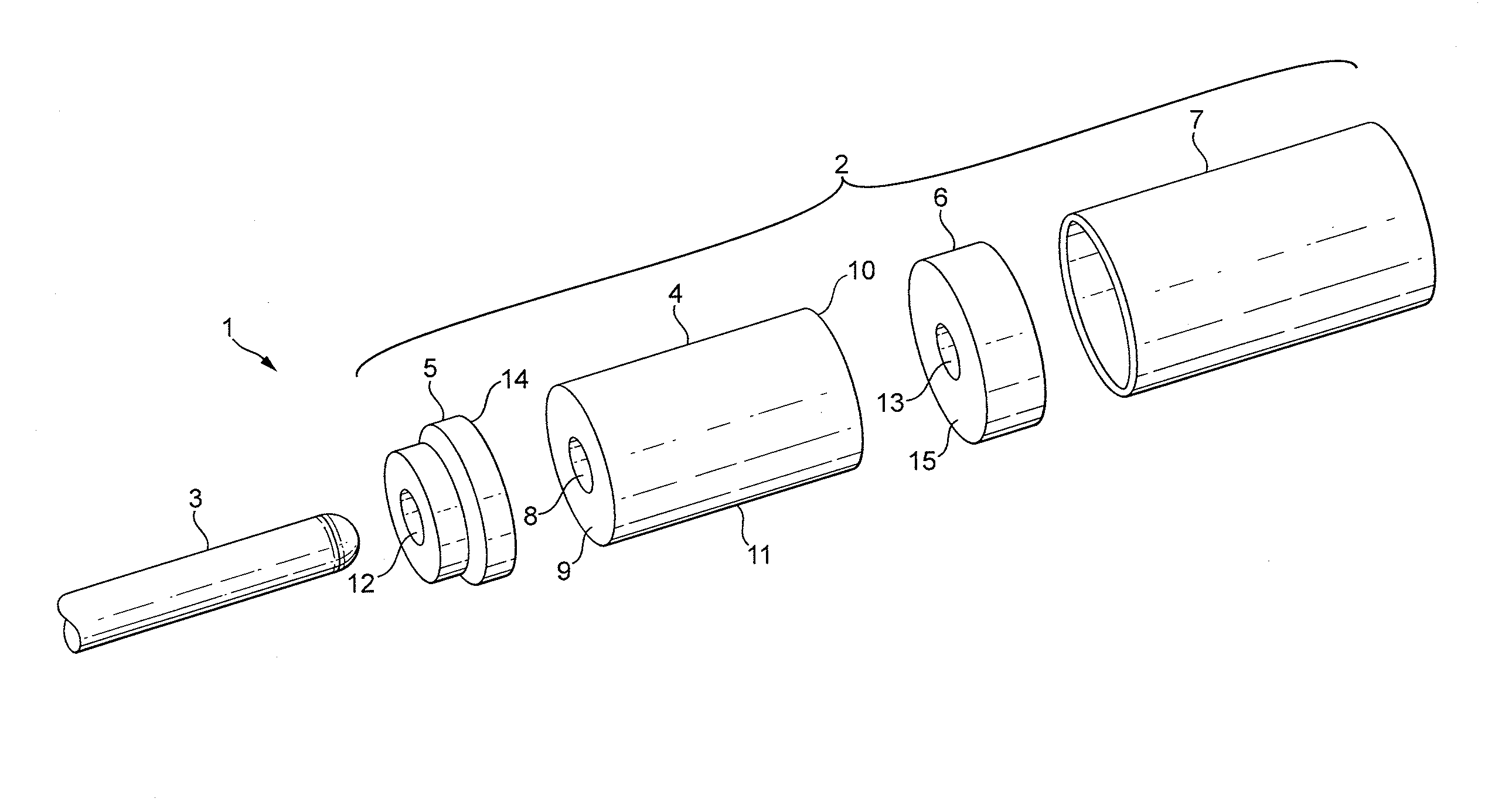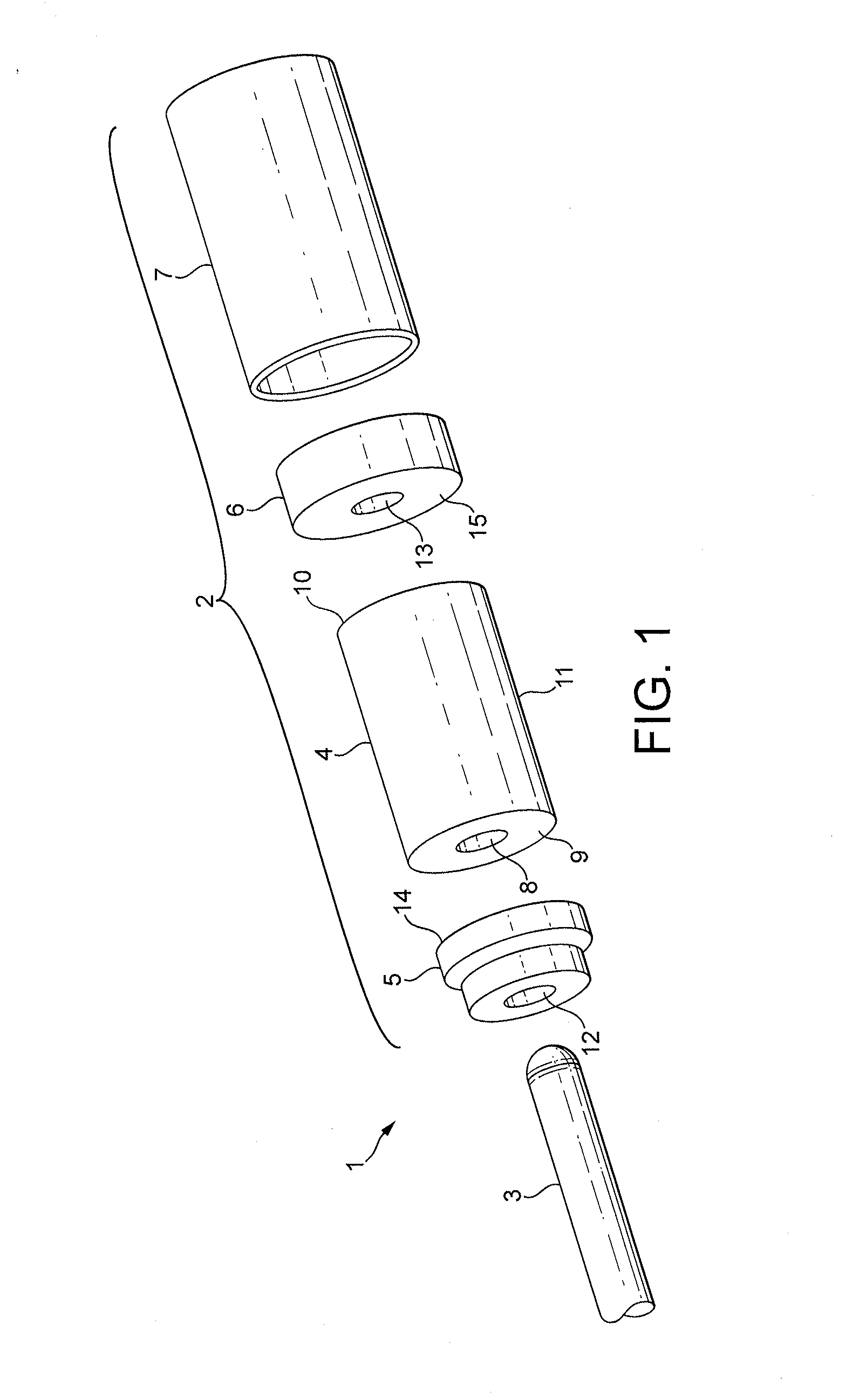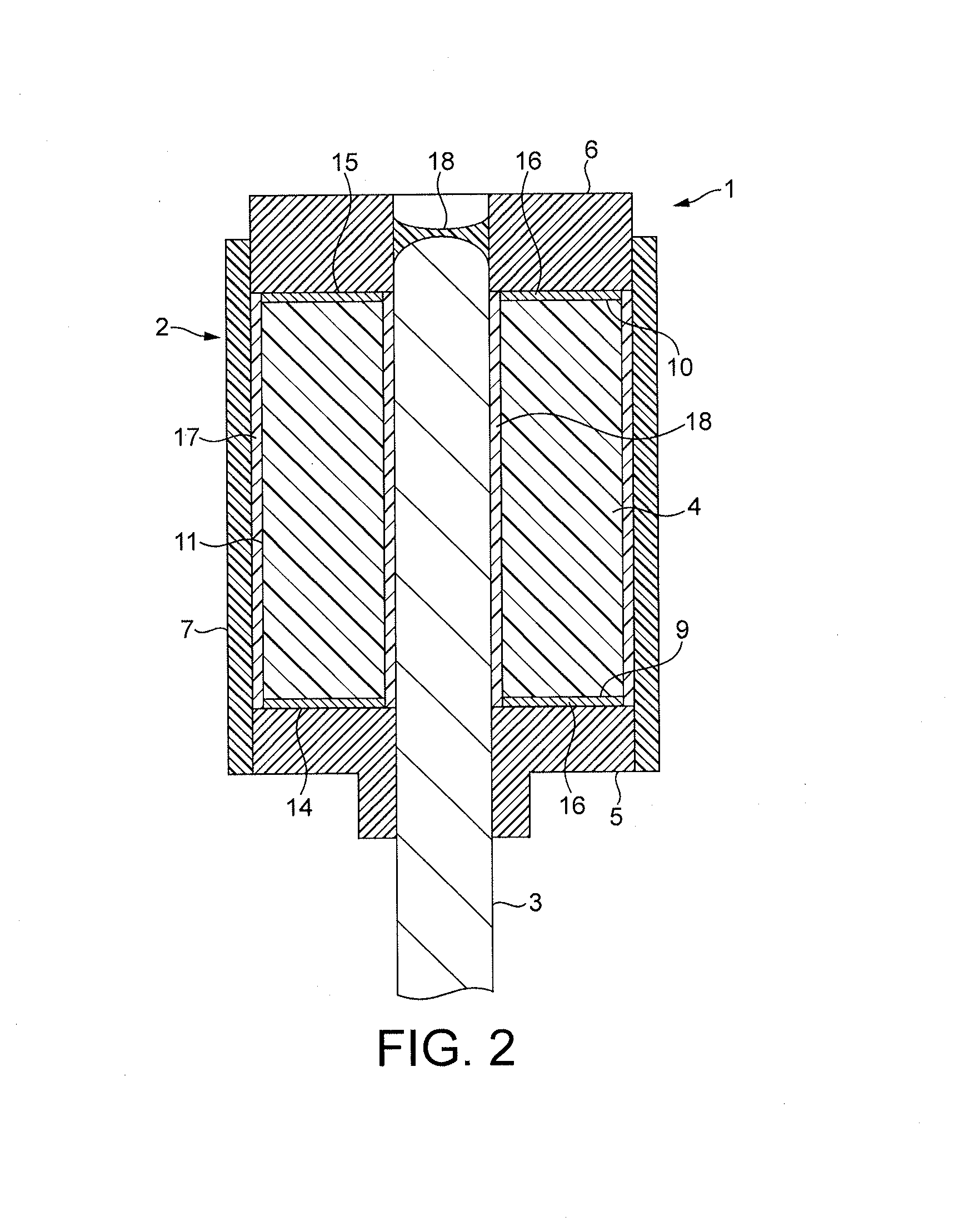Rotor core assembly
a rotor core and assembly technology, applied in the direction of lamination, dynamo-electric machines, electrical apparatus, etc., can solve the problems of rotor imbalance, magnet fracture, and many magnets are relatively brittle and will fracture, and achieve the effects of reducing the cost and weight of the rotor core assembly, and relatively quick cure in atmospheric moistur
- Summary
- Abstract
- Description
- Claims
- Application Information
AI Technical Summary
Benefits of technology
Problems solved by technology
Method used
Image
Examples
Embodiment Construction
[0033]The rotor 1 of FIGS. 1 and 2 comprises a rotor core assembly 2 secured to a shaft 3.
[0034]The rotor core assembly 2 comprises a permanent magnet 4, a first end cap 5, a second end cap 6, and a sleeve 7.
[0035]The magnet 4 is cylindrical in shape and has a central bore 8 that extends through the magnet 4 from a first end 9 to a second end 10. The bore 8 is sized such that the shaft 3 forms a clearance fit with the magnet 4 when inserted into the bore 8.
[0036]Each end cap 5,6 is made of plastic and has a bore 12,13 formed therethrough. The bore 12,13 in each end cap 5,6 is sized such that the shaft 3 forms an interference fit with the end cap 5,6 when inserted into the bore 12,13. The bore 12,13 in each end cap 5,6 is thus smaller than the bore 8 in the magnet 4. Each end cap 5,6 has a mating face 14,15 that is secured to an end 9,10 of the magnet 4 by an adhesive 16. The end caps 5,6 are secured to the magnet 4 such that the outer diameter of the magnet 4 is aligned concentrical...
PUM
| Property | Measurement | Unit |
|---|---|---|
| pressure | aaaaa | aaaaa |
| pressure | aaaaa | aaaaa |
| adhesive | aaaaa | aaaaa |
Abstract
Description
Claims
Application Information
 Login to View More
Login to View More - R&D
- Intellectual Property
- Life Sciences
- Materials
- Tech Scout
- Unparalleled Data Quality
- Higher Quality Content
- 60% Fewer Hallucinations
Browse by: Latest US Patents, China's latest patents, Technical Efficacy Thesaurus, Application Domain, Technology Topic, Popular Technical Reports.
© 2025 PatSnap. All rights reserved.Legal|Privacy policy|Modern Slavery Act Transparency Statement|Sitemap|About US| Contact US: help@patsnap.com



